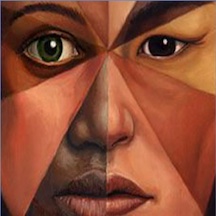 The U.S. Census only started offering people the option to choose more than one race in 2000, which was likely due in part to the long-held assumption that people universally categorize other people’s race based on hypodescent. Like the “one-drop rule,” hypodescent-based categorization assumes a person with both a Black and White parent would always be considered Black.
The U.S. Census only started offering people the option to choose more than one race in 2000, which was likely due in part to the long-held assumption that people universally categorize other people’s race based on hypodescent. Like the “one-drop rule,” hypodescent-based categorization assumes a person with both a Black and White parent would always be considered Black.
New research by psychologists at Duke University and the University of Chicago finds that Black and White children and adults categorize racially ambiguous faces differently. White people more often see multiracial faces as Black, whereas Black people more often see multiracial faces as White.
Multiracial participants, however, showed less bias when forced to choose just one race, and categorized racially ambiguous faces as White more often than Black, but less often than Blacks did.
Lead author Analia Albuja, an assistant professor of psychology at Northeastern University noted that “White kids tended to categorize the faces as Black more often than White, but the Black kids categorized the faces as White more often than Black. And the biracial kids were kind of in the middle. They also categorized the faces as White more than Black, but less so than the Black kids.”
Dr. Albuja also found that the apple doesn’t fall far from the tree. “Parents also tended to show the same pattern as kids. That helps us maybe understand how kids come to learn these ideas if their parents are showing the same kind of patterns.”
The full study, “Hypodescent or Ingroup Overexclusion?: Children’s and Adults’ Racial Categorization of Ambiguous Black/White Biracial Faces,” was published on the website of the journal Developmental Science. It may be accessed here.










